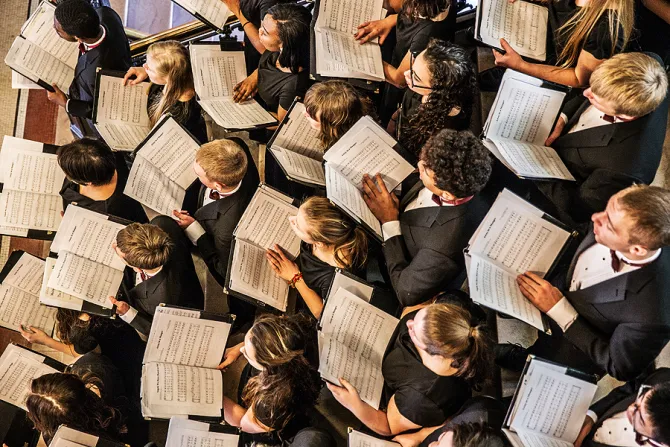Washington D.C., Sep 20, 2017 / 11:00 am
The Sistine Chapel Choir will perform in the U.S. for the first time in three decades, and will sing compositions that one expert says are an important heritage of the American Church.
Italian priest Father Massimo Palombella directs the Sistine choir, which will be singing works by Renaissance composers such as Giovanni Pierluigi da Palestrina, Antonio Allegri and Tomás Luis de Victoria.
"As in Rome, this style of Renaissance polyphony would be adopted by the Churches of the New World as the standard style of music, especially for the Mass," Dr. Grayson Wagstaff, dean of the Latin American Music Center at The Catholic University of America, explained to CNA.
On Sept. 20, a free concert will be hosted at the Basilica of the National Shrine of the Immaculate Conception in Washington D.C., next to The Catholic University of America.
After attending Italy's prestigious conservatory and spending years as a theology and music teacher, Fr. Palombella became the director at the Pontifical Music Chapel, and began conducting the choir in 2010.
Dr. Wagstaff applauded the Salesian priest's efforts to use the Vatican's historic repertory and rejuvenate this style of music into the daily life of the Papal Chapels.
Fr. Palombella will be performing sounds iconic of the Mexico City Cathedral and the many works of the Spanish composers which had made their way to the "new world."
"These works by Spanish composers would be the core of music transmitted, taught and copied in manuscripts in Mexico," Dr. Wagstaff said. "Young boys from Mexico (then 'New Spain') would be selected to receive training in music and become boy choristers for the cathedrals."
He added that this music is very significant to the "Church's artistic patrimony," and now has the ability inspire "parishes to focus on quality music and learning about the Church's legacy of art," especially from Latin America.
Fr. Palombella studied philosophy and theology at the Salesian Pontifical Unversity, and trained under organ players Luigi Molfino and Bishop Valentino Miserachs Grau. He also attended the Conservatory of Turin.
Ordained a priest to the Salesian order in 1995, he began teaching dogmatic theology at the Pontifical Salesian University and the Language of Music at Sapienza University of Rome. He then succeeded Father Giuseppe Liberto as director of the Sistine Chapel Choir.
In his remarks to CNA, Dr. Wagstaff noted the importance that the upcoming concert has to the university.
"For us, this is a celebration of CUA's role as one of the great centers in the world for teaching and preserving this musical legacy of Catholic tradition as well as our wonderful tradition of musicology and research on the history of music in Rome."



